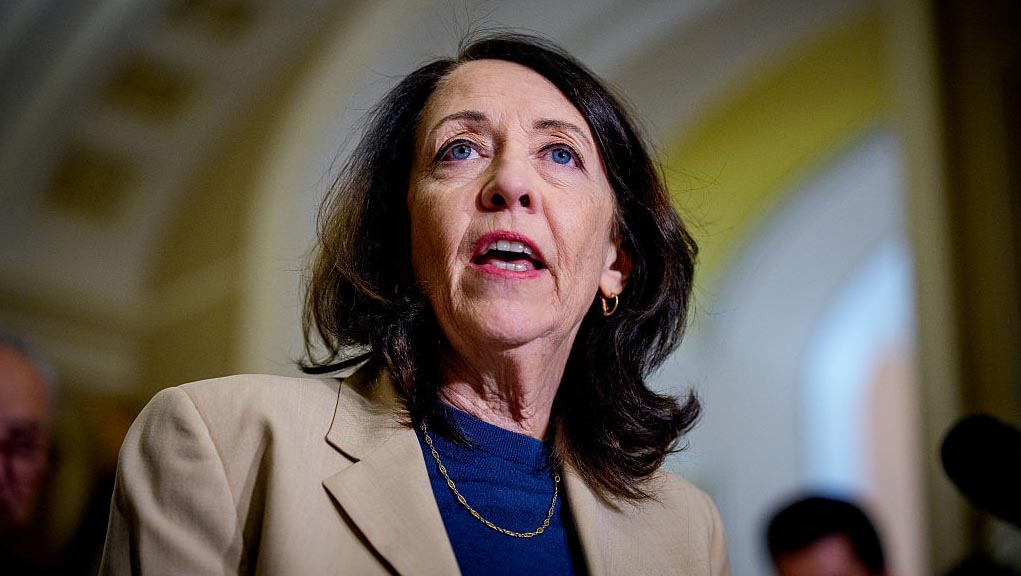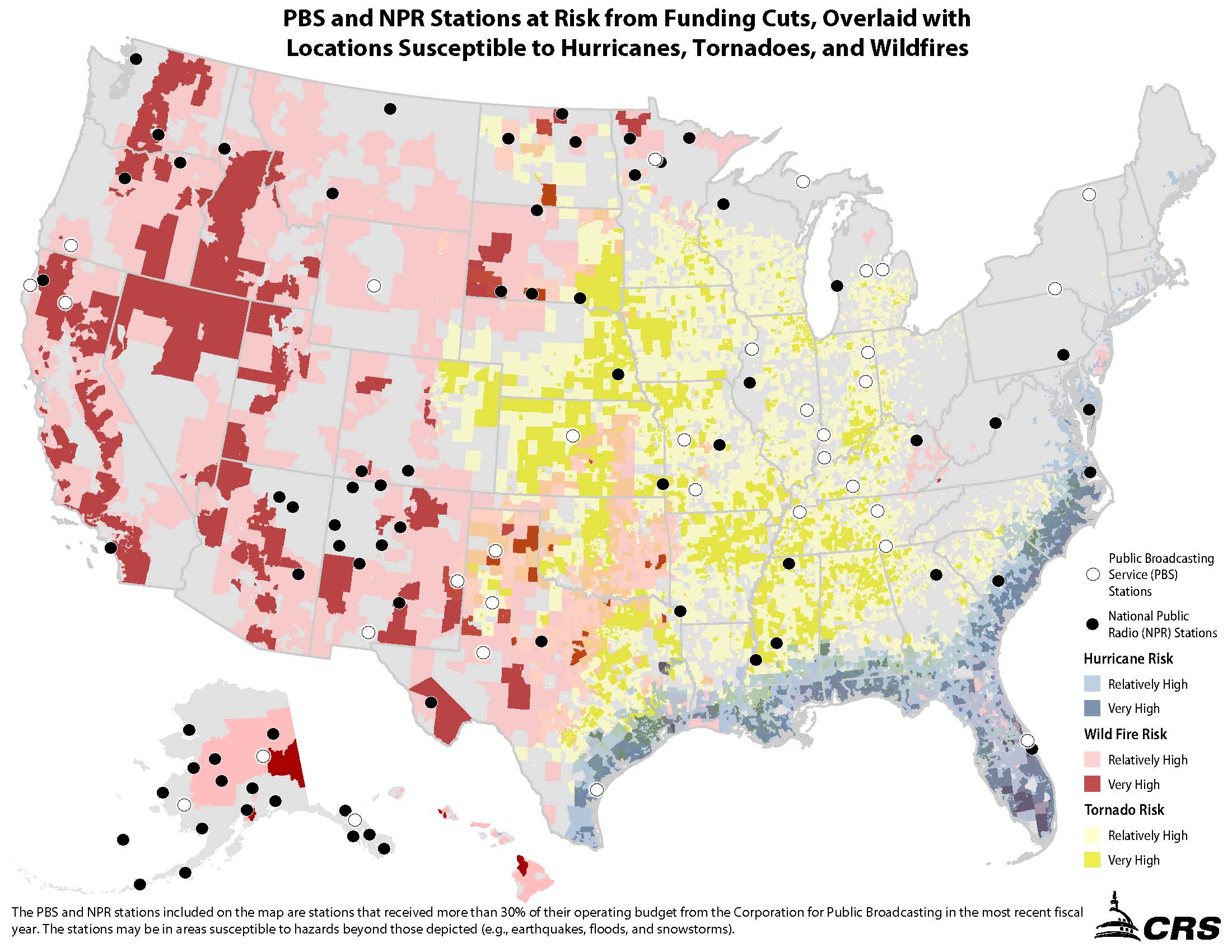Cantwell Report Highlights Role of Public Stations in Weather Emergencies
Report provides maps showing areas where public media funding cutbacks could harm emergency alert efforts during hurricanes, tornadoes and wildfires

WASHINGTON—Sen. Maria Cantwell (D-Wash.), ranking member of the Senate Committee on Commerce, Science and Transportation, has issued a report highlighting the critical role U.S. public broadcasters play in responding to weather emergencies.
The report found that in rural areas, public broadcasters may be the sole source or one of only a few sources of information during disasters, leaving them disproportionately impacted by federal funding cuts. That risk is illustrated in maps that accompany the report.
“Public television and radio aren’t just for quality children’s television and unique radio content,” said Cantwell said. “For millions of Americans, these stations are often their only source of emergency information during weather disasters. Last month, House Republicans approved President [Donald] Trump’s rescission request clawing back $1.1 billion in Congressionally-approved funding for public broadcasting. This report shows that if Senate Republicans allow this devastating cut to pass the Senate, nearly 13 million Americans could be left without access to their public media stations and the life-saving emergency alerts or information they need. As people prepare for potential hurricanes, wildfires and other extreme weather events, we should not be gutting our support for public media.”
As previously reported, on June 3, Trump submitted a rescission request to Congress for the CPB’s funding for fiscal 2026 and 2027, seeking to claw back nearly $1.1 billion in congressionally approved funding. On June 12, the House approved the president’s rescission request, and it is now before the Senate. If passed by the Senate, these cuts may leave millions of Americans without access to lifesaving alerts and emergency information, Cantwell said.
The Snapshot Report issued by Cantwell's office describes its key findings as follows:
- The operations of 79 public radio and 33 TV stations across 34 states and territories are considered vulnerable to federal funding cuts.
- Nearly 13 million Americans live in communities under threat of losing their local public broadcast stations. What’s worse, these stations serve large swaths of the Western, Midwestern and Southeastern United States at risk of wildfires, tornadoes, hurricanes and other public safety emergencies. This double threat casts uncertainty on the ability of these stations to disseminate emergency alerts and information to residents when they need it most.
- More than 70% of federal funding goes directly to local public broadcasters for content, interconnection and support services. It would cost local public broadcasters more than double CPB’s current contribution to replace these critical services through alternative public or private means.
To access additional maps and the full report, click here.
The professional video industry's #1 source for news, trends and product and tech information. Sign up below.
George Winslow is the senior content producer for TV Tech. He has written about the television, media and technology industries for nearly 30 years for such publications as Broadcasting & Cable, Multichannel News and TV Tech. Over the years, he has edited a number of magazines, including Multichannel News International and World Screen, and moderated panels at such major industry events as NAB and MIP TV. He has published two books and dozens of encyclopedia articles on such subjects as the media, New York City history and economics.


